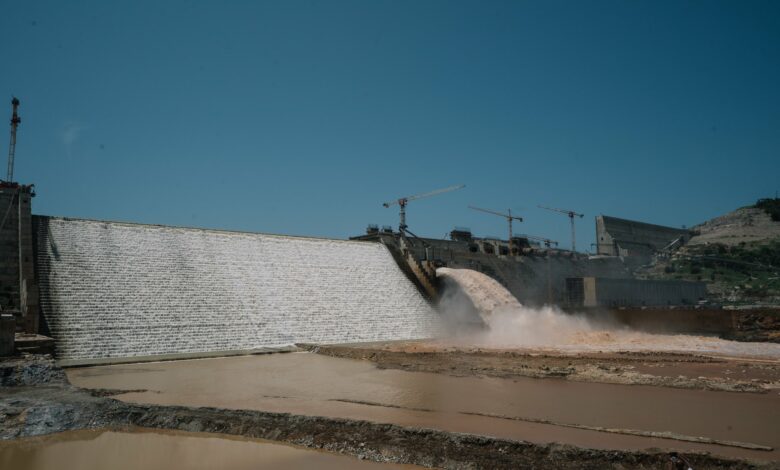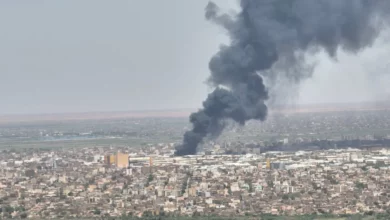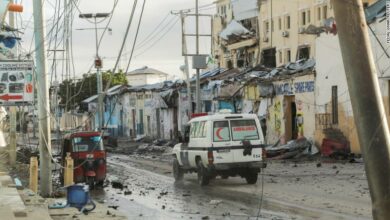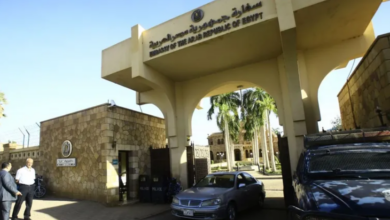
The Ethiopian government is still insisting on its intransigence and its disregard for international norms in order to escape its domestic problems and to preoccupy the public opinion with the Grand Ethiopian Renaissance Dam.
It has been said that this is the case in order to gain popular sympathy. The use of resonant speech and creating fake external conflicts to relieve international pressure about the ongoing violations in the Tigray region.
The Ethiopian authorities announced on Thursday that it plans to remove 17,000 hectares (40,000 acres) of forests around the Renaissance Dam next month, in preparation for a new filling of the Grand Ethiopian Renaissance Dam lake.
It is best known as the third filling at a time when experts are still confirming that the second filling failed and was incomplete.
These statements came a few months after the statements of the Ethiopian Minister of Irrigation, Seleshi Bekele, in which he announced backtracking on heightening the middle corridor of the Renaissance Dam, which meant failure to complete the second filling of the Dam completely as it was scheduled.
The announcement of the alleged third filling came during a meeting that included the Ethiopian Minister of Irrigation Aisha Mohamed, the Governor of the Benishangul-Gumuz region El-Shazly Hassan, and officials from the Ethiopian government in the Benishangul-Gumuz region where the Renaissance Dam is located.
The statement added that preparations are underway to complete what is required for the third phase of deforestation for the third filling of the Renaissance Dam, pointing out that deforestation will be completed within 60 days of starting work next month.
The statement quoted Hassan as he stressed on the importance of providing the necessary support and security to complete the work, saying “the security forces will secure the area to speed up work before the start of the rainy season.”
The Ethiopian authorities had cleared 4,854 hectares of land before the second filling in July 2021.
Ethiopia announced Thursday that it will soon start producing energy from the Renaissance Dam, while it is still in dispute with Egypt and Sudan over the operation and filling process. By this step, Addis Ababa confirmed though, it does not mean “stopping the tripartite negotiations.”
Ethiopia will soon start producing energy from the Renaissance Dam, and Sudan should celebrate this event because it will be the most beneficiary, Ethiopian Foreign Ministry spokesperson Dina Mufty said.
He added, during a press conference held Thursday at the ministry’s headquarters, that energy production from the Renaissance Dam does not mean stopping the tripartite negotiations between Egypt, Ethiopia and Sudan on the outstanding issues, as the negotiations will continue to reach a win-win solution.
Last week, the Ethiopian government, headed by Prime Minister Abiy Ahmed, held its first meeting at the site of the Renaissance Dam, as part of a 100-day evaluation of all ministries and government institutions.
Negotiations related to the Renaissance Dam have officially stopped since April 2021, after Egypt, Sudan and Ethiopia failed to reach understandings before the start of the second filling of the dam, which Ethiopia actually implemented in July.
Cairo and Khartoum reject Ethiopia’s insistence on filling the dam before reaching a binding agreement on filling and operation.
On Thursday, President Abdel Fattah al-Sisi confirmed, during his meeting with a number of accredited foreign correspondents, that Egypt suffers from water poverty according to international rates, stressing Egypt’s adherence to a binding legal agreement regarding the Renaissance Dam file with the Ethiopian side.
The construction of a huge dam such as the Renaissance Dam, and without coordination between it and the High Dam, is unprecedented, and requires a clear and binding coordination mechanism between the two dams, which Ethiopia rejects, Egypt’s Minister of Irrigation Mohamed Abdel Aaty said earlier.
Egypt presented to Ethiopia several scenarios that guarantee the dam’s ability to generate electricity by up to 85 percent in the most severe cases of drought, and the need for a coordination mechanism within the framework of a fair and binding legal agreement that is among the measures to adapt to the negative effects of climate change, he added.
In his speech on the sidelines of the World Youth Forum, Abdel Aaty added that Egypt had agreed to establish many dams in the Nile Basin countries, such as the Owen reservoir in Uganda, which Egypt financed, in addition to many dams in Ethiopia, such as the Tekezé Dam, Chara Chara and Tana Beles dams, which Egypt did not object to its establishment.
He referred to the project of the navigation corridor between Lake Victoria and the Mediterranean, which aims to transform the Nile into a development hub linking the Nile Basin countries.
In a related situation, a member of the Egyptian delegation of the Ethiopian dam negotiations, Hisham Bakhit, said that the percentage of the Ethiopian dam’s collapse is internationally classified among the most dangerous projects.
“If we go back to the report of the international committee of experts, we will find that it raised many negative points in the Ethiopian studies related to the safety of dams,” Bakhit added, during a video presented by Ahmed Moussa, in his program “On My Responsibility” broadcast on Sada al-Balad satellite channel.
Ethiopia claimed to have carried out studies on these negative points, but there were no clear signs of doing this, he added.
“In the event of a collapse in the Renaissance Dam, its effects will be devastating to our brothers in Sudan,” he concluded.




